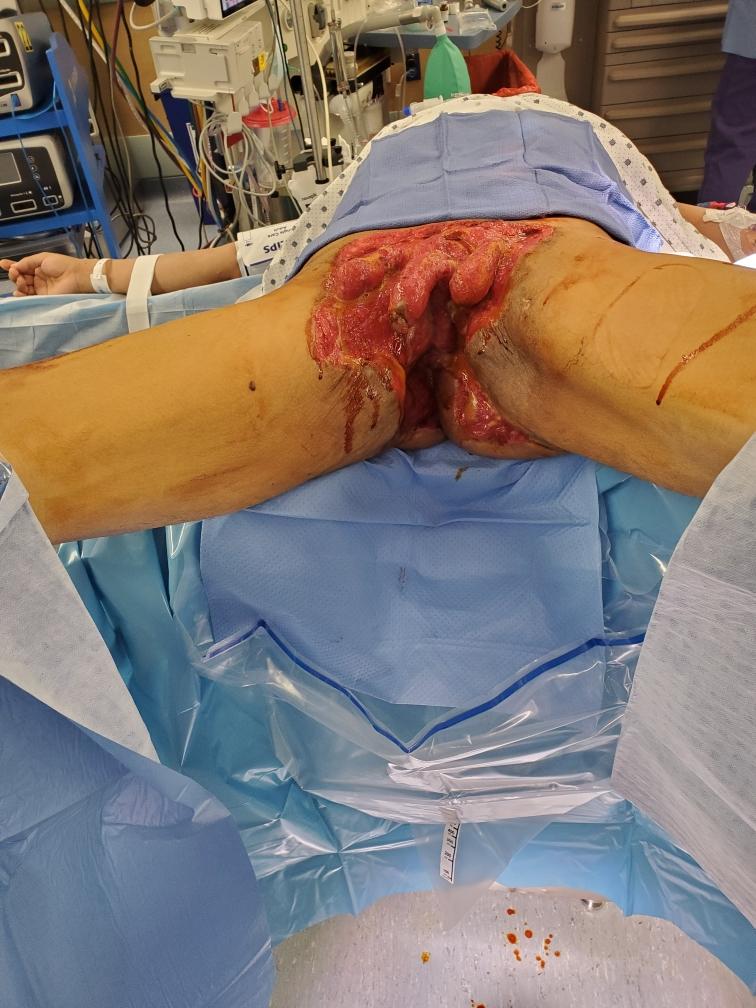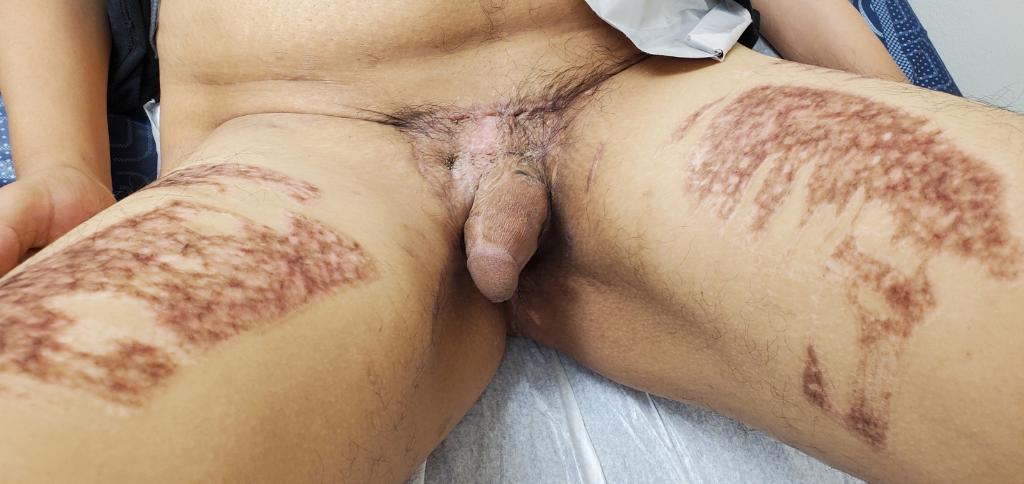Back
Poster, Podium & Video Sessions
Podium
PD29: Trauma/Reconstruction/Diversion: External Genitalia Reconstruction and Urotrauma (including transgender surgery) II
PD29-09: Primary Closure is Superior to Secondary Intention for Treating Fournier Gangrene
Saturday, May 14, 2022
2:20 PM – 2:30 PM
Location: Room 244
Peter Sam*, Andrew Zilavy, Carolyn Ice, Maxx Gallegos, Albuquerque, NM

Peter Sam, MD
University of New Mexico Hospital
Podium Presenter(s)
Introduction: Initial management of Fournier Gangrene (FG) is well-established. However, the optimal management post-debridement is still unclear. In general, most post-debridement FG wounds are allowed to heal by secondary intention (SI) with negative pressure wound dressings or treated with delayed primary closure (DPC) using flaps and/or grafts. We hypothesize that DPC is superior to closure by SI in terms of days in the hospital (LOS) and time until return to normal daily activity. Additionally, we hypothesize that DPC is not inferior to SI in terms of infection control.
Methods: At our single tertiary care center, we retrospectively assessed all cases of FG that underwent wound healing by SI vs DPC from 2016 to 2021. A transition to DPC began when our institution hired a GU reconstructive surgeon. Patients who died from their disease, those who were lost to follow up, or those whose closure deviated from our standardized protocol were excluded. Primarily, we collected data regarding LOS and time until return to normal daily activity. Secondarily, we evaluated if DPC or SI resulted in any further need for additional debridement for lack of infection control. T-tests were used to compare our two groups.
Results: 18 cases of DPC and 19 cases of SI met inclusion criteria. Patients who underwent DPC spent an average of 14.3 days in the hospital compared to 21.1 days in SI group, CI (-13.23 to -0.37) p<0.05. Time until return to normal daily activity was 43.6 days for the DPC group compared to 103.1 days for SI group CI (-92.14 to -26.86) p<0.005. None of the DPC or SI cases required any debridement beyond the initial 48 hours from presentation.
Conclusions: At our institution, DPC was superior to closure by SI in regards to LOS and time until return to normal daily activity. Patients that underwent DPC enjoyed about 7 less LOS and returned to normal activity about 60 days earlier than patients in the SI group. DPC was non-inferior to SI for infection control. Multi-institutional prospective data is needed to confirm these findings.
Source of Funding: None


Methods: At our single tertiary care center, we retrospectively assessed all cases of FG that underwent wound healing by SI vs DPC from 2016 to 2021. A transition to DPC began when our institution hired a GU reconstructive surgeon. Patients who died from their disease, those who were lost to follow up, or those whose closure deviated from our standardized protocol were excluded. Primarily, we collected data regarding LOS and time until return to normal daily activity. Secondarily, we evaluated if DPC or SI resulted in any further need for additional debridement for lack of infection control. T-tests were used to compare our two groups.
Results: 18 cases of DPC and 19 cases of SI met inclusion criteria. Patients who underwent DPC spent an average of 14.3 days in the hospital compared to 21.1 days in SI group, CI (-13.23 to -0.37) p<0.05. Time until return to normal daily activity was 43.6 days for the DPC group compared to 103.1 days for SI group CI (-92.14 to -26.86) p<0.005. None of the DPC or SI cases required any debridement beyond the initial 48 hours from presentation.
Conclusions: At our institution, DPC was superior to closure by SI in regards to LOS and time until return to normal daily activity. Patients that underwent DPC enjoyed about 7 less LOS and returned to normal activity about 60 days earlier than patients in the SI group. DPC was non-inferior to SI for infection control. Multi-institutional prospective data is needed to confirm these findings.
Source of Funding: None


.jpg)
.jpg)